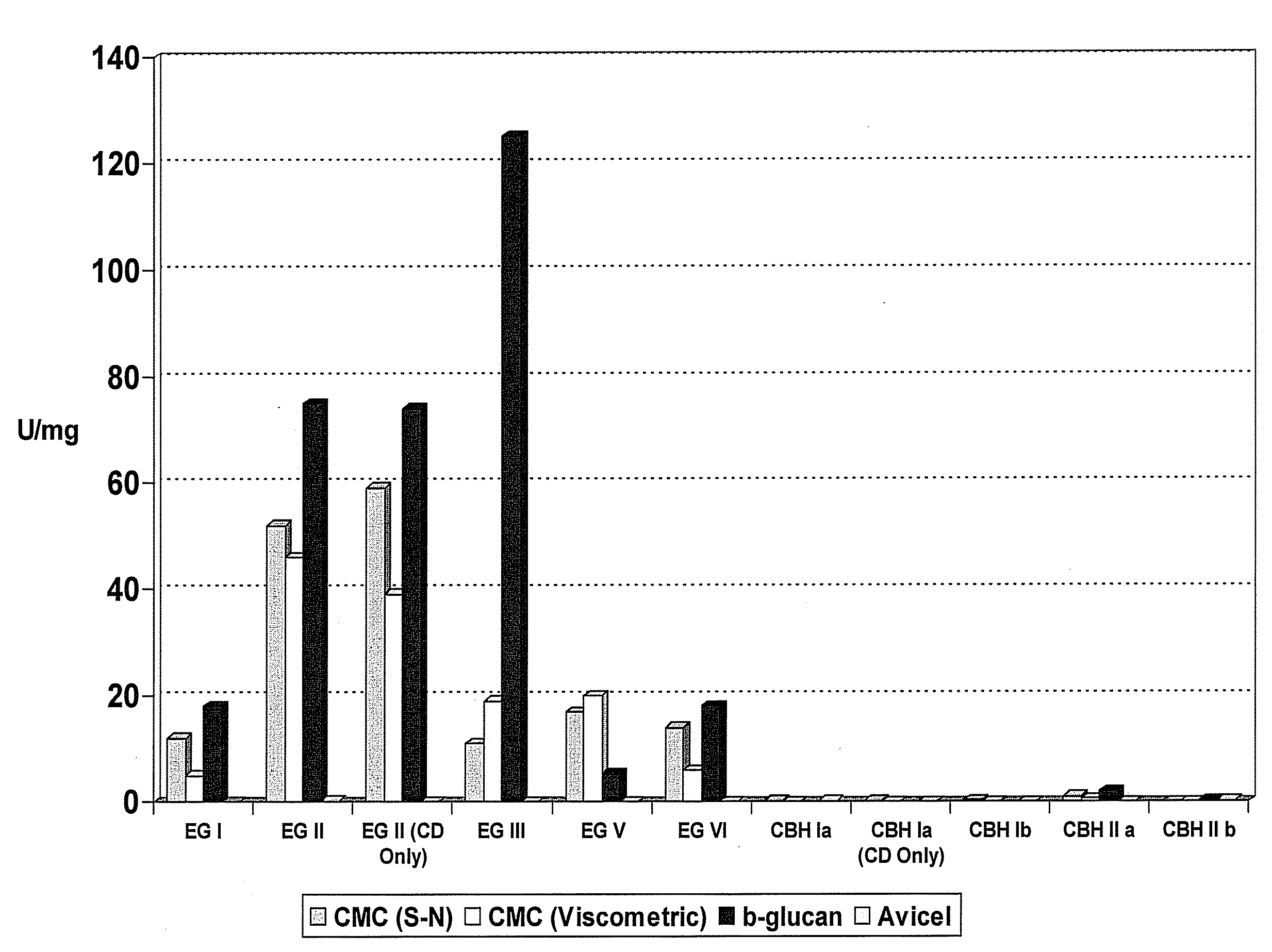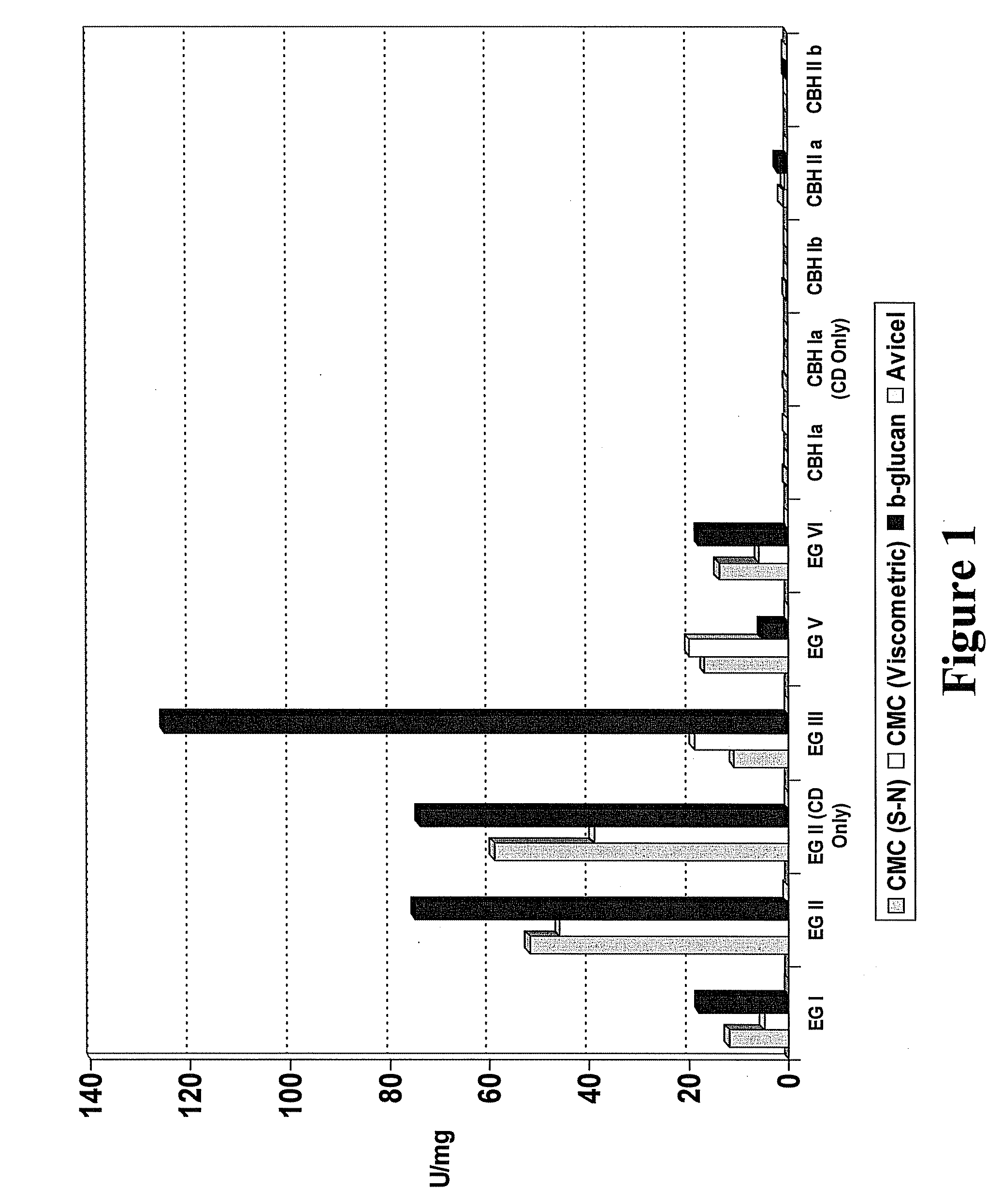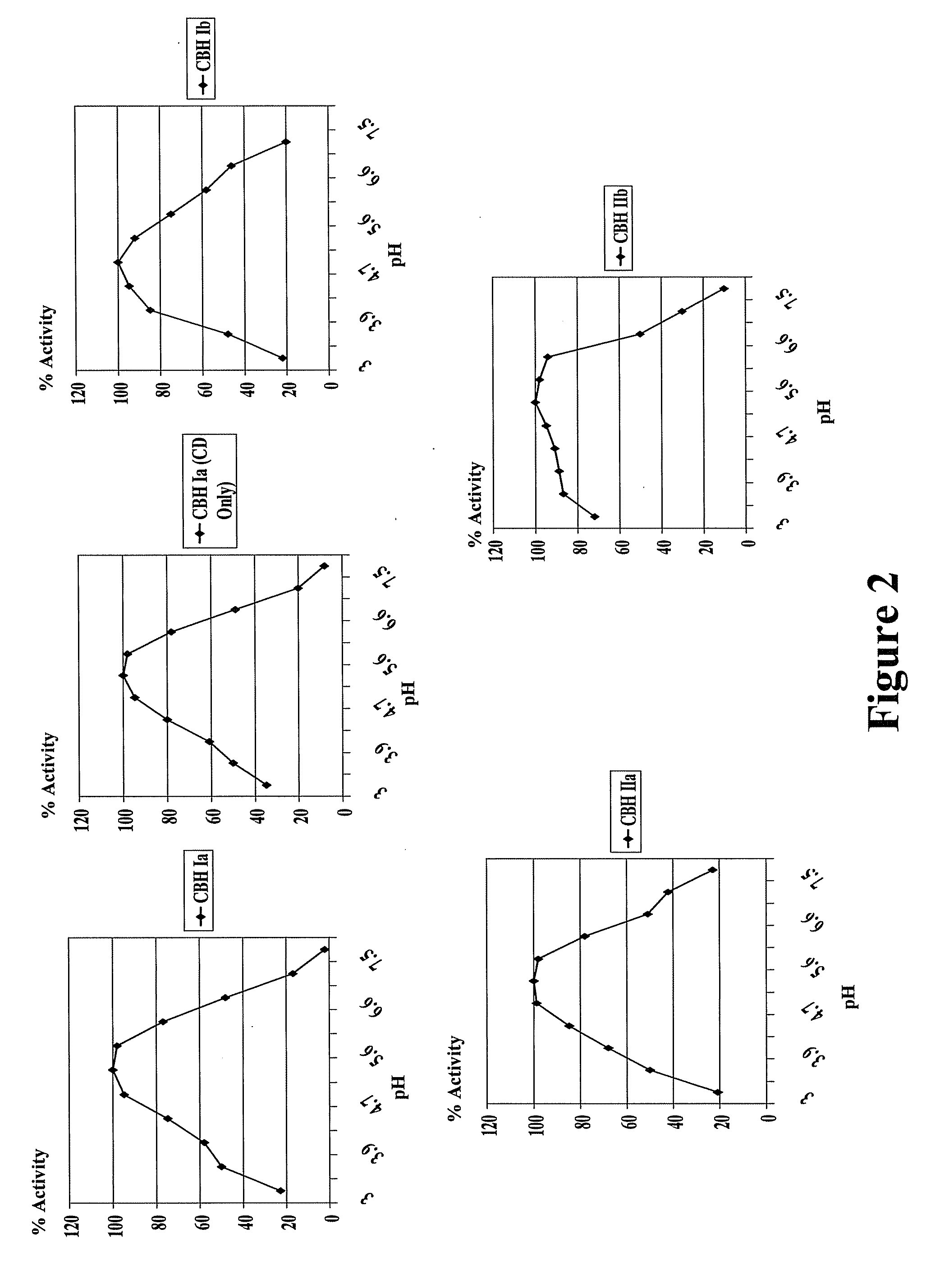Novel Fungal Enzymes
a technology of fungal enzymes and enzymes, applied in the field of new fungal enzymes, can solve the problems of reducing the hydrolysis efficiency reducing and reducing the efficiency of hydrolysis of hemi cellulosic polymers by enzymes, so as to improve enhance the cleaning ability of detergent compositions
- Summary
- Abstract
- Description
- Claims
- Application Information
AI Technical Summary
Benefits of technology
Problems solved by technology
Method used
Image
Examples
example 1
[0367]The following example illustrates the Somogyi-Nelson assay used to measure beta-glucanase enzymatic activity.
[0368]This assay measures the release of reducing sugars (as glucose equivalents) by the action of β-glucanase on a soluble β-glucan. One β-glucanase unit of activity is the amount of enzyme that liberates 1 micromole of reducing sugars, expressed as glucose equivalents, in one minute at 50° C. and pH 5.0.
Reagents
[0369]Acetate buffer (0.05 M, pH 5.0) is prepared as follows. 4.1 g of anhydrous sodium acetate or 6.8 g of sodium acetate*3H2O is dissolved in distilled water so that the final volume of the solution is 1000 mL (Solution A). In a separate flask, 3.0 g (2.86 mL) of glacial acetic acid is mixed with distilled water to make a total volume of 1000 mL (Solution B). The final 0.05 M acetate buffer, pH 5.0, is prepared by mixing Solution A with Solution B until the pH of the resulting solution is equal to 5.0.
[0370]β-glucan from barley (medium viscosity, Megazyme, P-...
example 2
[0383]The following example illustrates the assays used to measure beta-glucosidase, α-galactosidase and β-galactosidase enzymatic activities.
[0384]This assay measures the release of p-nitrophenol by the action of β-glucosidase on p-nitrophenyl β-D-glucopyranoside (PNPG). Modifications to the assay for measuring α-galactosidase and β-galactosidase enzymatic activities are discussed below. One β-glucosidase unit of activity is the amount of enzyme that liberates 1 micromole of p-nitrophenol in one minute at 40° C. and pH 5.0.
Reagents
[0385]Acetate buffer (0.1 M, pH 5.0) is prepared as follows. 8.2 g of anhydrous sodium acetate or 13.6 g of sodium acetate*3H2O is dissolved in distilled water so that the final volume of the solution to be 1000 mL (Solution A). In a separate flask, 6.0 g (5.72 mL) of glacial acetic acid is mixed with distilled water to make the total volume of 1000 mL (Solution B). The final 0.1 M acetate buffer, pH 5.0, is prepared by mixing Solution A with Solution B u...
example 3
[0394]The following example illustrates the Somogyi-Nelson assay used to measure CMCase enzymatic activity.
[0395]This assay measures the release of reducing sugars (as glucose equivalents) by the action of cellulase on a soluble cellulosic substrate (CMC). One CMCase unit of activity is the amount of enzyme that liberates 1 micromole of reducing sugars, expressed as glucose equivalents, in one minute at 50° C., pH 5.0, 0.05 M sodium acetate buffer.
Reagents
[0396]Acetate buffer (0.05 M, pH 5.0) is prepared as follows. 4.1 g of anhydrous sodium acetate or 6.8 g of sodium acetate*3H2O is dissolved in distilled water so that the final volume of the solution to be 1000 mL (Solution A). In a separate flask, 3.0 g (2.86 mL) of glacial acetic acid is mixed with distilled water to make the total volume of 1000 mL (Solution B). The final 0.05 M acetate buffer, pH 5.0, is prepared by mixing Solution A with Solution B until the pH of the resulting solution is equal to 5.0.
[0397]The sodium salt o...
PUM
| Property | Measurement | Unit |
|---|---|---|
| pH | aaaaa | aaaaa |
| pH | aaaaa | aaaaa |
| adsorption time | aaaaa | aaaaa |
Abstract
Description
Claims
Application Information
 Login to View More
Login to View More - R&D
- Intellectual Property
- Life Sciences
- Materials
- Tech Scout
- Unparalleled Data Quality
- Higher Quality Content
- 60% Fewer Hallucinations
Browse by: Latest US Patents, China's latest patents, Technical Efficacy Thesaurus, Application Domain, Technology Topic, Popular Technical Reports.
© 2025 PatSnap. All rights reserved.Legal|Privacy policy|Modern Slavery Act Transparency Statement|Sitemap|About US| Contact US: help@patsnap.com



